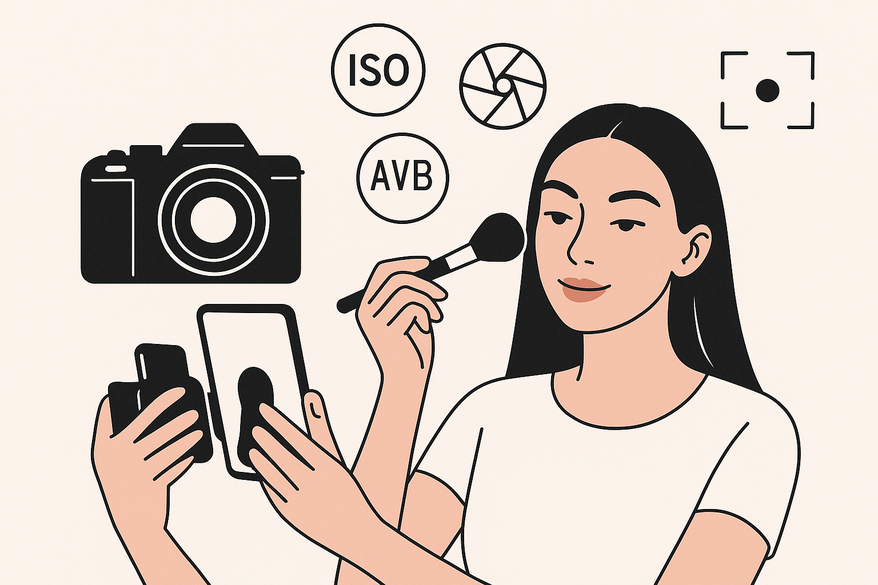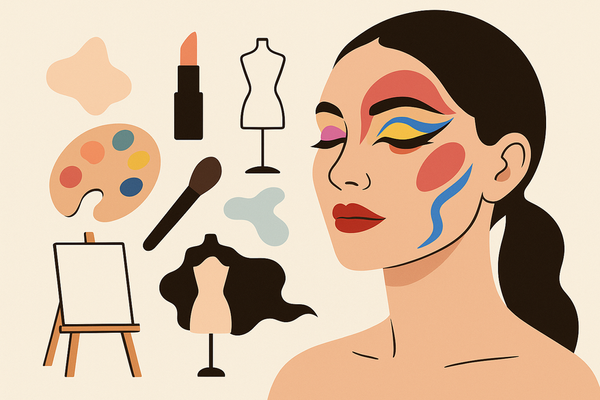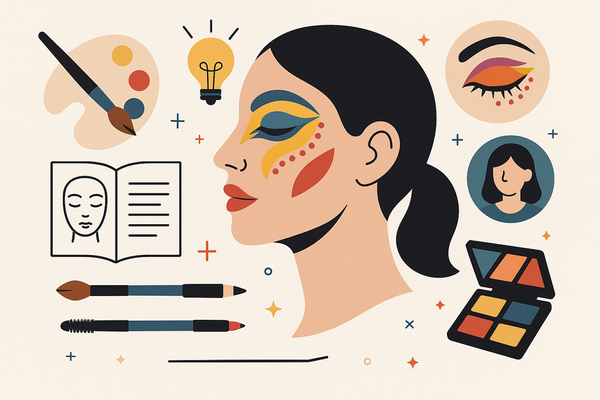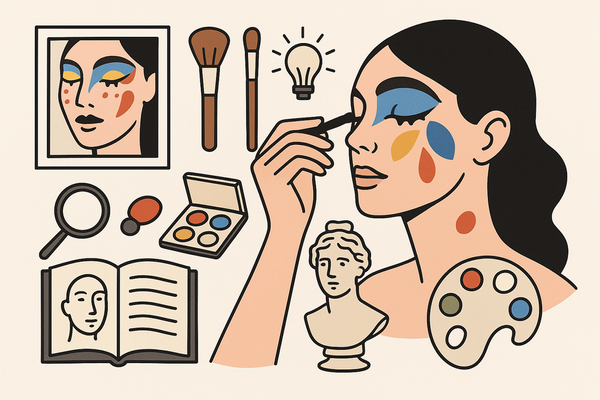How to Master Camera Settings for Flawless Makeup Selfies
Learn how to master camera settings for flawless makeup selfies by optimizing ISO, shutter speed, aperture, white balance, and focus for perfect results.

Estimated reading time: 6 minutes
Key Takeaways
- Optimal camera settings (ISO, shutter speed, aperture, white balance, focus) are crucial for capturing true-to-life makeup details.
- Using the right lighting environment and adjusting settings in Pro/Manual mode can elevate your selfies from auto to professional quality.
- Common mistakes like overexposure, incorrect white balance, and noise can be easily fixed with simple tweaks.
- Experimentation and keeping a settings log help you discover your signature style and achieve consistent perfect selfies.
Table of Contents
- Why Camera Settings Matter for Makeup Selfies
- Define and Optimize Each Setting
- Step-by-Step Guide to Adjusting Your Camera Settings
- Smartphone vs. Digital Camera Settings
- Common Mistakes and How to Fix Them
- Practical Examples and Visual Comparisons
- Final Tips and Encouragement for Experimentation
- Conclusion and Call to Action
Why Camera Settings Matter for Makeup Selfies
Capturing your makeup's true colors and textures goes beyond application—it’s about mastering the settings that render every highlight and contour in its best light. From color accuracy to detail clarity, the right configuration ensures your look shines. Plus, synchronizing your camera with natural vs. artificial setups balances shadows and preserves nuance. For lighting tips, see selfie lighting makeup tips.
Define and Optimize Each Setting
ISO (Sensor Sensitivity)
- Definition: ISO controls the sensor’s light sensitivity—lower values (100–400) minimize noise and highlight crisp skin textures.
- Tip: Stick to ISO 100–400 in daylight; indoors or at dusk, you may raise it to 800 but avoid higher to prevent grain.
Shutter Speed (Freeze Motion)
- Definition: Shutter speed dictates exposure duration—too slow and you risk blur; too fast and you may underexpose.
- Recommended: 1/60–1/100 sec locks in subtle head movements for razor-sharp selfies.
Aperture (Depth of Field)
- Definition: Aperture (f-number) sets depth of field—wide apertures (e.g., f/2.8) isolate your face with a stunning bokeh background.
- Benefit: Emphasizes makeup details—think winged liner and cheek contour—while softening distractions.
White Balance (Color Accuracy)
- Definition: White balance calibrates color temperature so skin tones and pigments stay true—no blue, green, or orange casts.
- Presets: “Daylight” outdoors; “Tungsten” or “Fluorescent” indoors.
- Manual: In Pro mode, slide the temperature until foundation and blush look natural.
- Explore the secret to flawless makeup in photos for deeper insights.
Focus (Sharpness)
- Definition: Focus zeroes in on your eyes or key makeup areas for crystal-clear detail.
- Tip: Tap the eye area on smartphones; use single-point or manual AF on DSLRs for precision.
Step-by-Step Guide to Adjusting Your Camera Settings
Follow these seven steps, reviewing your preview and histogram after each to guarantee balanced exposure and authentic color:
- Choose Your Lighting Environment (north-facing window or softbox; avoid direct midday sun).
- Set ISO (100–400 in bright light; up to 800 indoors if needed).
- Adjust Shutter Speed (1/60–1/100 sec for sharp shots).
- Select Aperture (f/2.8–f/4 for a shallow depth of field).
- Configure White Balance (preset or manual slider).
- Lock Focus (tap eyes or use single-point/manual focus).
- Check Exposure Compensation (+0.3 EV if makeup appears flat; monitor the histogram).
Smartphone vs. Digital Camera Settings
Smartphones: Dive into Pro mode for ISO, white balance, shutter speed, and exposure sliders—steer clear of beauty filters. Third-party apps can unlock advanced controls.
Digital Cameras: Switch to Manual (M) mode, pair a fast prime lens (e.g., 50 mm f/1.8), and set a custom white balance with a gray card. These steps differentiate your selfies from run-of-the-mill auto snaps.
Common Mistakes and How to Fix Them
- Overexposed/Washed-Out Makeup: Lower ISO or exposure compensation; watch highlight clipping.
- Unnatural Skin Tones: Adjust white balance toward warmer or cooler presets.
- Soft or Blurry Details: Focus on the eyes; avoid digital zoom.
- Harsh Shadows & Hotspots: Use diffusers or reflectors for even light distribution.
- Grainy/Noisy Images: Keep ISO ≤800; add more soft light instead of boosting sensitivity.
Practical Examples and Visual Comparisons
Create side-by-sides to highlight the impact of your adjustments:
- Auto vs. Manual/Pro mode
- Incorrect vs. Correct white balance
- High ISO vs. Low ISO
Caption each comparison with settings used (ISO, aperture, shutter speed, white balance).

Final Tips and Encouragement for Experimentation
- Customize settings for your face shape, makeup style, and environment.
- Keep a settings log in your Notes app to track winning combinations.
- Use consistent backgrounds and angles to craft your signature look—find best angles makeup selfies guide for inspiration.
Conclusion and Call to Action
Mastering ISO, shutter speed, aperture, white balance, and focus empowers you to capture professional-looking makeup selfies anywhere. Try these settings today, share your results in the comments, and subscribe for more photography and beauty tips!
FAQ
- What ISO setting is best for flawless makeup selfies?
Use ISO 100–400 in daylight to keep noise low. Indoors or in low light, you can raise it up to 800, but avoid higher values to prevent grain. - How do I choose the right white balance for makeup photos?
Start with the “Daylight” preset outdoors and “Tungsten” or “Fluorescent” indoors. In Pro mode, slide the temperature until your foundation and blush look natural. - Why is aperture important for makeup selfies?
A wide aperture (low f-number) creates a shallow depth of field, isolating your face and emphasizing makeup details with a pleasing background blur. - How can I avoid grainy makeup selfies?
Keep ISO at or below 800 and introduce more soft light (natural or diffused) instead of cranking up sensitivity. - Should I use my smartphone or a digital camera for makeup selfies?
Both can yield excellent results. On smartphones, use Pro mode or advanced apps; on cameras, shoot in Manual mode with a fast prime lens and custom white balance.




